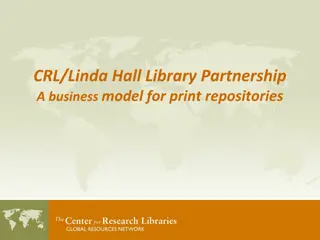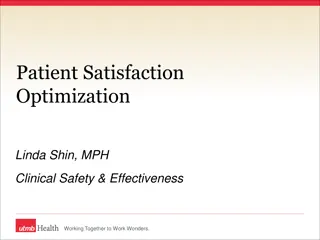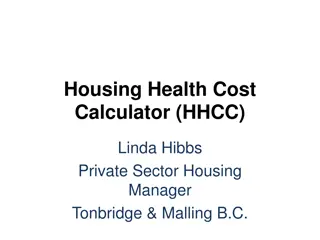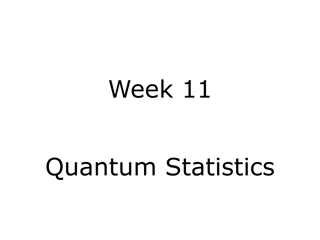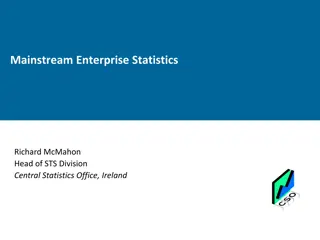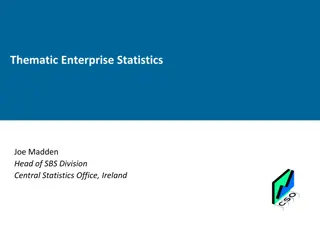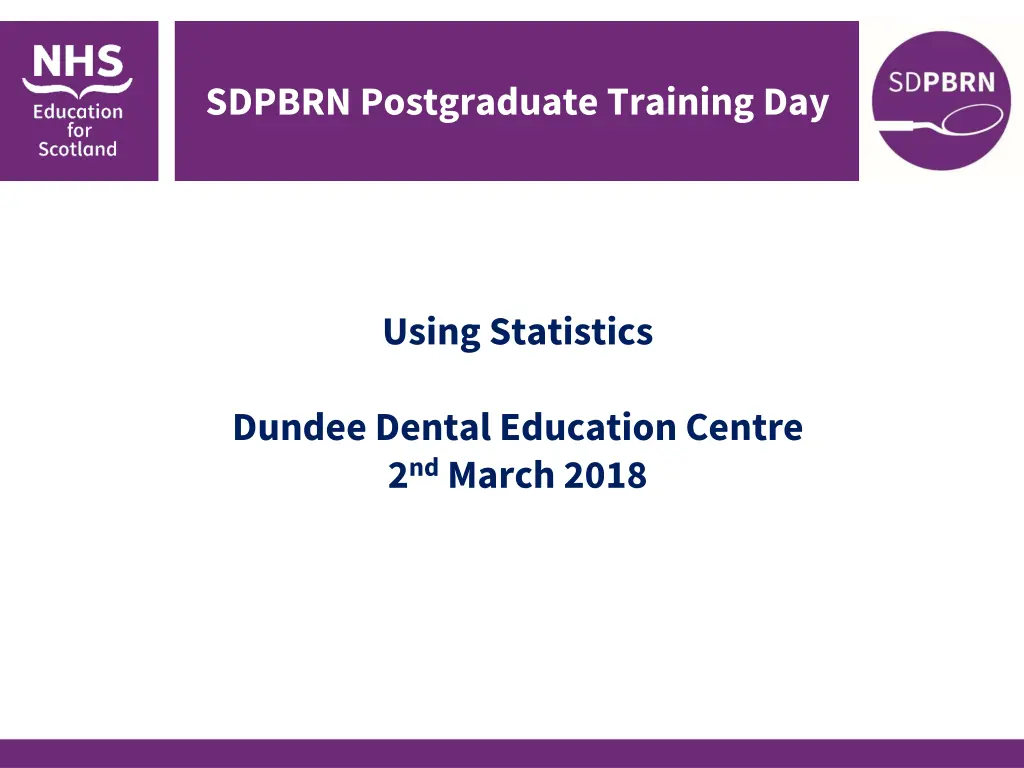
Understanding Statistics in Dental Education
Explore the world of statistics in dental education through descriptive and inferential statistics, including types of data, central tendency, dispersion, and inferential analysis. Enhance your statistical knowledge with insights from the NHS Education for Scotland’s SDPBRN Training Day.
Uploaded on | 0 Views
Download Presentation

Please find below an Image/Link to download the presentation.
The content on the website is provided AS IS for your information and personal use only. It may not be sold, licensed, or shared on other websites without obtaining consent from the author. If you encounter any issues during the download, it is possible that the publisher has removed the file from their server.
You are allowed to download the files provided on this website for personal or commercial use, subject to the condition that they are used lawfully. All files are the property of their respective owners.
The content on the website is provided AS IS for your information and personal use only. It may not be sold, licensed, or shared on other websites without obtaining consent from the author.
E N D
Presentation Transcript
SDPBRN Postgraduate Training Day Using Statistics Dundee Dental Education Centre 2nd March 2018
NHS Education for Scotland SDPBRN Training Day 2018 Show of Hands Are you or do you plan to do a study involving statistical analysis of data? What type of data are you collecting? Have you or do you intend to plan your statistical approach before collecting your data? Photo: Brian Marks
NHS Education for Scotland SDPBRN Training Day 2018 Today Types of data Descriptive statistics Hypotheses, errors and significance Types of statistical tests
NHS Education for Scotland SDPBRN Training Day 2018 Types of Data Determines appropriate statistical descriptions and tests Nominal categorical variables with no inherent order or ranking (=, ) Ordinal variables with an inherent rank or order (<, >) Interval variables are ordered and the difference between them is meaningful (+, -) Ratio as interval data with a non-arbitrary zero point (+, -, x, )
NHS Education for Scotland SDPBRN Training Day 2018 Descriptive Statistics Provide a summary / overview of the data and does not try to explain or interpret. Population parameters; Sample statistics Descriptive Measures Frequency count, percentage, frequency use to show how often a response is given Central Tendency mean, median, mode use to show an average or most commonly indicated response Dispersion/Variation range, variance, standard deviation use to find out how spread out your data are Position percentiles, quartiles how scores fall in relation to one another
NHS Education for Scotland SDPBRN Training Day 2018 Inferential Statistics Using sample data to make predictions (inferences) about the whole population testing hypotheses, measuring associations, predicting outcomes Samples can be random (simple, stratified, cluster, systematic) non-random Sampling error (population parameter minus sample statistic) not representative of the population not large enough
NHS Education for Scotland SDPBRN Training Day 2018 Generating hypotheses Example Two groups of smokers randomly allocated to receive NRT (Gp. A) or not (Gp. B) for stopping smoking Outcome - CO2 breath test H0 Null hypothesis of no difference H0 No difference between proportion of people giving up smoking in the two groups HA Alternative hypothesis of a difference HA Difference between proportions of people giving up in the two groups (2 sided) HA The proportion of people giving up in group A is greater than those in group B (1 sided)
NHS Education for Scotland SDPBRN Training Day 2018 Testing hypotheses Assume null hypothesis true On basis of data either reject or fail to reject the null hypothesis in favour of the alternative hypothesis Example H0 No difference between Gp. A and Gp. B fail to reject H0 in favour of HA HA Difference between Gp. A and Gp. B (2 sided) reject H0 in favour of HA HA Proportion stopping smoking in Gp. A is greater than the proportion in Gp. B (1 sided) reject H0 in favour of HA
NHS Education for Scotland SDPBRN Training Day 2018 Probability The probability of getting an event (e.g. a head when a coin is tossed) is the proportion of times this event will occur in a long series of random trials (coin tosses) Ranges from 0 to 1 and measures the degree of belief in a hypothesis or statement
NHS Education for Scotland SDPBRN Training Day 2018 Types of error A type I error is the error of wrongly rejecting Ho when it is true. The probability of making a type I error is denoted by . A type II error is the error of wrongly accepting Ho when it is false. The probability of making a type II error is denoted by . I - is the power of a statistical test
NHS Education for Scotland SDPBRN Training Day 2018 Significance level The level of significance is defined as the probability of making a type I error, and therefore equals to Usually the level of statistical significance is stated by the P-value P values lessthan 0.05 (expressed as P<0.05) considered "statistically significant" and P valuesless than 0.01 (P<0.01) considered "statistically highly significant." Statistical significance and clinical importance
NHS Education for Scotland SDPBRN Training Day 2018 Confidence Intervals The Wobble Factor How sure are we about the results? The range within which the true size of the effect (never exactly known) lies, with a given degree of assurance (95% or 99%) No effect The shorter the confidence interval the more certain we are about the results If it crosses the line of no treatment effect the intervention might not be doing any good and could be doing harm
NHS Education for Scotland SDPBRN Training Day 2018 Common Statistical Tests Testing differences between groups Parametric tests continuous data, normal distribution, equal variance Independent sample t-test Compares the means of 2 independent groups Paired t-test Compares two repeated means from the same groups One-way ANOVA Compares the means of > 2 independent groups
NHS Education for Scotland SDPBRN Training Day 2018 Testing differences between groups Non-parametric tests data at least ordinal distributions are similar in shape Mann-Whitney U Non-parametric equivalent of independent samples t-test Wilcoxon sign-rank test Kruskal-Wallis test Non-parametric equivalent of one-way ANOVA Non-parametric equivalent of paired sample t-test Testing differences between groups nominal data Tests for differences between 2 or more nominal variables (2x2 tables test difference) Chi-square In general parametric tests are more powerful than non-parametric tests easier to interpret
NHS Education for Scotland SDPBRN Training Day 2018 Measuring association between variables Tests for the strength of a linear association between 2 continuous (interval/ratio) variables e.g. height and weight Tests for the strength of a linear association between 2 ordinal variables e.g. job satisfaction and motivation to improve skills Pearson correlation (r) Spearman correlation (rho) If r is negative, low values of one variable are associated with high values of the other variable If r is positive, high values of one variable are associated with high values of the other variable
NHS Education for Scotland SDPBRN Training Day 2018 Estimating the relationship between an outcome variable and an explanatory variable Single explanatory variable - Predicts how the value of an outcome variable changes when the explanatory variable is varied Simple regression Y = dmft; X = age; = change in Y if X changes by one unit Y= + x + e Multiple explanatory variables Predicts how the value of an outcome variable changes when an explanatory variable is varied holding all other explanatory variables constant Multiple regression Y = dmft; X1 = age; X2 = sugar consumption; X3 = SIMD quintile 1 = change in Y if X1 changes by one unit holding the values of X2 and X3 constant Y= + 1X1 + 2X2 + 3X3 + e
NHS Education for Scotland SDPBRN Training Day 2018 Research Question Do adults who attend the dentist regularly experience less dental anxiety? Do patients who brush with fluoride toothpaste have more sound teeth? Are there differences in the average yearly incomes of dentists, medics and vets? How does life expectancy decrease for every additional pound overweight and for every X cigarettes smoked per day? Information and data type Test Is there a difference between the percentage of men and women who use tooth whitening products?
NHS Education for Scotland SDPBRN Training Day 2018 Summary Plan your statistical approach before collecting data The type of data you collect determines appropriate statistical descriptions and tests Descriptive statistics can be used with nominal, ordinal, interval and ratio data = describe the sample Inferential statistics can be used test hypotheses, measure associations, predict outcomes Inferential statistics tell us the statistical significant of our findings and if we can infer from our sample to the larger population
NHS Education for Scotland SDPBRN Training Day 2018








